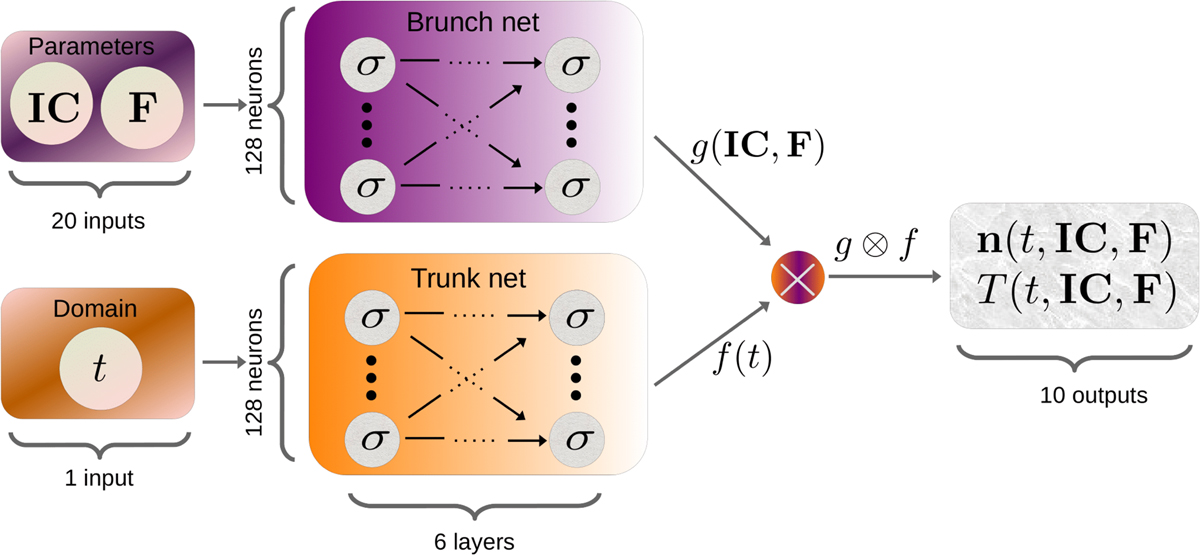Fig. 1

Download original image
Scheme of the emulator implemented in this work. The system’s ODE describing the ISM chemical network (Sect. 2.1) is emulated via the DeepONet formalism (Sect. 2.2) by splitting the dependence i) from the initial conditions (T, and densities n of each chemical species, i.e. e−, H−, H, H+, He, He+, He++, H2, and ![]() ) and the radiation flux (F) with the branch network (𝑔) and ii) from the temporal evolution in the time (t) domain with a trunk network (ƒ); ƒ and g are feed-forward neural networks, each consisting of 6 dense layers with 128 neurons: the tensor product (⊗) of the branch and the trunk is adopted to compute the loss function (Eq. (3)). We individually trained the networks for the temperature and each of the chemical species; the dataset adopted to train DeepONet is described in Sect. 2.3 and its main properties are summarized in Table 2.
) and the radiation flux (F) with the branch network (𝑔) and ii) from the temporal evolution in the time (t) domain with a trunk network (ƒ); ƒ and g are feed-forward neural networks, each consisting of 6 dense layers with 128 neurons: the tensor product (⊗) of the branch and the trunk is adopted to compute the loss function (Eq. (3)). We individually trained the networks for the temperature and each of the chemical species; the dataset adopted to train DeepONet is described in Sect. 2.3 and its main properties are summarized in Table 2.
Current usage metrics show cumulative count of Article Views (full-text article views including HTML views, PDF and ePub downloads, according to the available data) and Abstracts Views on Vision4Press platform.
Data correspond to usage on the plateform after 2015. The current usage metrics is available 48-96 hours after online publication and is updated daily on week days.
Initial download of the metrics may take a while.


